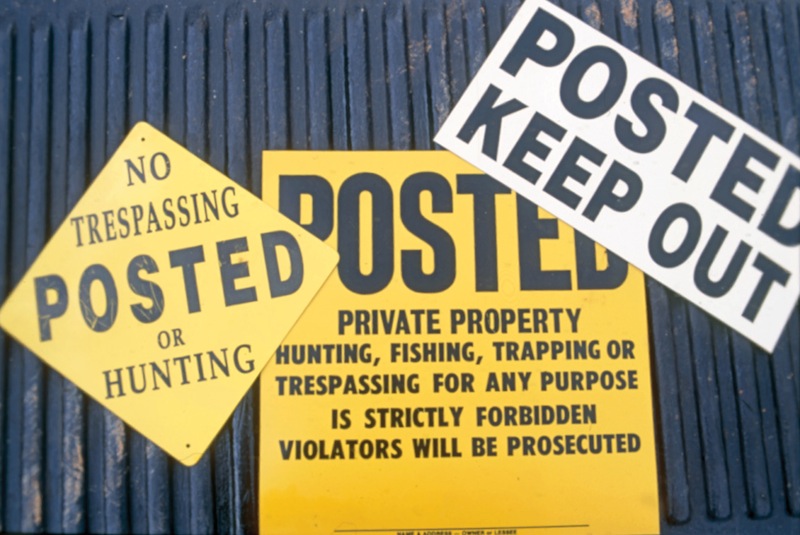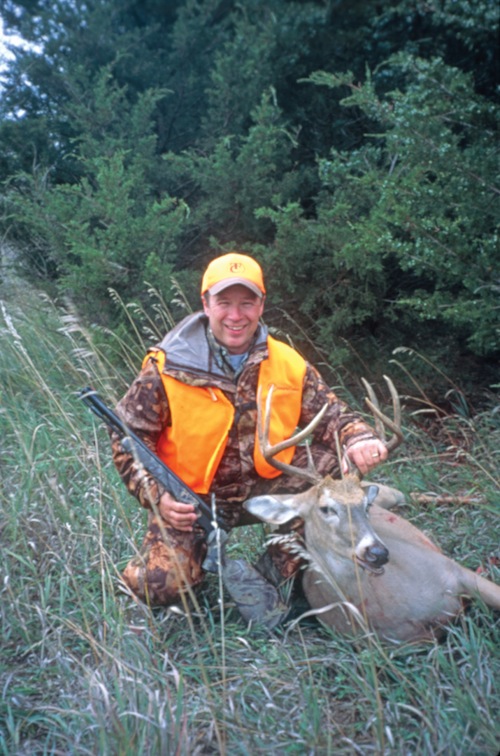 Accidents of all types happen on hunting clubs every hunting season. Firearm-related accidents, tree stand falls, ATV wrecks, fire, sharp instrument cuts and falls in general are among the most common accidents that cause deaths or injuries on hunting leases. During the years I managed 220 hunting leases I saw these and other unusual accidents happen many times, and more often than not the club couldn’t believe it had happened on their lease. Fortunately for the members, the company I worked for required every club to carry a general liability insurance policy, and name the company as additional insured in the policy.
Accidents of all types happen on hunting clubs every hunting season. Firearm-related accidents, tree stand falls, ATV wrecks, fire, sharp instrument cuts and falls in general are among the most common accidents that cause deaths or injuries on hunting leases. During the years I managed 220 hunting leases I saw these and other unusual accidents happen many times, and more often than not the club couldn’t believe it had happened on their lease. Fortunately for the members, the company I worked for required every club to carry a general liability insurance policy, and name the company as additional insured in the policy.
Every hunting club needs general liability insurance for the protection of the club as well as for each of its members. In addition, the landowner should be named as an additional insured — most lessors require it. This can usually be done for a small additional fee, or free.
According to Dr. Ed Wilson, a hunting club insurance expert with the Davis-Garvin Agency writing in Quality Whitetails magazine, “simplified, liability insurance is designed to provide coverage for hunting clubs and their members for acts for which they could be held legally responsible. Thus, the insurance is designed to lessen the risk associated with occurrences caused by a negligent act of the hunting club or members and guests. Clearly, all hunters and landowners should be aware of the risks they are taking by not having adequate liability insurance. It’s simply not worth risking all of your personal assets or your family’s security for unfortunate accidents or the acts of members of your hunting club.”
What Coverage Should Your Club Have?
The coverage package that is most recommended by the insurance agents contacted at this writing is one which has the following:
* $1 million per occurrence general liability coverage
* $2 million general aggregate
* $100,000 fire legal liability
* Member-to-member coverage
* Guest liability coverage
* Liability coverage for firearms, tree stands, ATVs, mobile equipment, limited watercraft, hunting dogs and more.
Policies of this type are available through organizations such as the Quality Deer Management Association (www.qdma.com) and the Forest Landowners Association (www.forestlandowners.com.)
Know The Exclusions
Some hunting insurance policies I have seen have exclusions to coverage. An example was a club I worked with several years ago that had a policy that excluded any claims related to fire. The club conducted a controlled burn one Saturday as suggested in their wildlife management plan, and the fire jumped a firebreak and burned a 40-acre two-year-old pine plantation on their neighbor’s land. The club had to pay the neighbor several thousand dollars for the damage.
Club officers should always review any potential insurance policy to make sure you are getting the coverage you want and need.
Know All Fees
Some hunting insurance policies are through an organization, which the members of the club might be required to join in order to qualify for the insurance. See what the insurance fee covers and what, if any, other fees are required to be paid by the club or the members.
How Much Does A Policy Cost?
The cost of a policy such as the one described above will vary from underwriter to underwriter and will vary depending upon the number of acres in your hunting lease. However, I shopped out hunting club insurance as I was writing this article and, based on 1,000 acres, the annual cost ranged from $222 to $360. That’s a small price to pay for the peace of mind that comes from knowing you are financially protected.
Reduce Risks
One of the best ways to reduce the possibility of you and your hunting club having to fall back on your liability insurance to get you through a lawsuit is to keep the risks on your club property at a minimum. This can be done through thinking ahead about what could get people hurt on the property. Here are just a few examples based on accidents I have seen in 40-plus years of being in the hunting business.
* If there are any old hand-dug wells on the property, they should be filled and covered.
* All property lines should be well marked, to keep the club members on their property and warning others not to trespass.
* If the club has a shooting range, it should be well marked so no one will enter the area without intending to.
* Old tree stands account for many falls. Once a permanent stand becomes unstable, it should be torn down.
* Have a property map where the club members can mark where they are hunting. If someone fails to return from a hunt, you know where to go looking for them.
* Have camp and firearm safety rules, and enforce them.
* Install smoke detectors in the clubhouse.
* Have fire extinguishers on hand in the camp kitchen and near fireplaces or wood-burning stoves. Keep the charge current.
* Have emergency phone numbers posted so all members can see them.
* Have a plan in case of an emergency or if a member is missing.
* Offer an annual hunter safety refresher class for the members.
 These are just a few ways a club can reduce the chance of having an accident that could require the use of your insurance. A good club policy is to have a club member serve as a risk-reduction officer and make it his responsibility to find risks and eliminate them before they become a liability.
These are just a few ways a club can reduce the chance of having an accident that could require the use of your insurance. A good club policy is to have a club member serve as a risk-reduction officer and make it his responsibility to find risks and eliminate them before they become a liability.
Liability Wavier
Most landowners allowing hunters to hunt on their property require the hunters to sign a liability release form, where the hunter is warned about the many potential dangers of hunting on the property and acknowledges they are aware of these dangers and accept the risks. Now a growing number of hunting clubs are requiring their members and guest hunters to sign a similar liability release, acknowledging they know of the many potential dangers of hunting and accept those risks, holding the hunting club and its members harmless in the event of an accident. If your club decides to use a liability wavier, it should be prepared by an attorney in the state in which the club property is located. A sample liability wavier can be found at http://recenter.tamu.edu/pdf/570.pdf. The wavier is not a replacement for a liability insurance — your club still needs the insurance — but the wavier just sets a record for proving the person who signed it knew the risks and chose to hunt anyway.
I would never be in a hunting club that didn’t have a solid, up-to-date liability insurance policy. It is a small expense, as hunting club expenses go, and it gives the members protection that they hope they will never need.
Hunting Club Insurance Sources
Davis-Garvin Agency, Inc.
(800) 845-3163
Quality Deer Management Association
Hunt Club Insurance
(800) 209-DEER
Outdoors Insurance
Hunt Club Liability Insurance
(866) 695-9040
www.outdoorsinsurance.com
Forest Landowners Insurance Program
(800) 658-7047 |
www.locktonrisk.com/forestlandowners/huntlease.htm






